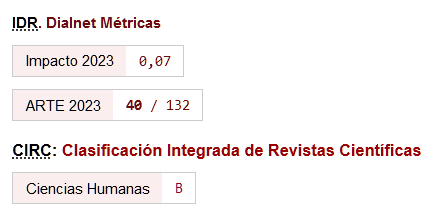Submissions
Submission Preparation Checklist
As part of the submission process, authors are required to check off their submission's compliance with all of the following items, and submissions may be returned to authors that do not adhere to these guidelines.- For any questions or difficulties with the platform contact us at atrio@upo.es
- Need help with uploading your text? Click here to learn more information on how to upload an article on this platform
- The article has not been previously published or submitted to other academic journals.
- The text fulfills the bibliography and style requirements indicated in the guidelines for authors.
-
To submit a text to a peer-reviewed journal you must follow the instructions listed in "Ensure a blind peer-review" in order to avoid the identities of both authors and editors from being known. For this purpose, a document will be submitted with the author’s information and any references to this information included in the manuscript will be deleted (in both the text itself as well as the file properties).
Copyright Notice
All authors published in Atrio. Revista de Historia del Arte have an understanding and agree to the following terms:
- The authors preserve the copyrights of the author and guarantee the journal the right to be the first to publish their work as well as licensing under the Creative Commons Attribution-NonCommercial-ShareAlike 4.0 International License that permits others to share the work with recognition of the authorship and the initial publication in this journal.
- The author or assigner of the material submitted for publication authorizes that the journal may publish the content of the referenced manual in printed, digital form or any other medium, without any economic or other obligation. This transfer of use of submitted material indicates an understanding of all rights required for publication of the material in the journal. The moral rights of the author remain guaranteed.
- The author or assigner is fully aware and in agreement with all or whatever content provided, and will form a work whose use is transferred to the journal for its full or partial publication.
- The author or assigner guarantees to be the Intellectual Property rights holder of all content provided, including the text itself and images/photographs/photographic works included in the article.
- The author or assigner ensures and guarantees: (i) that all material submitted to the journal completes all the applicable legal provisions; (ii) that the use of whichever material protected by the rights of the author and personal rights in the conception of the material used is legalized; (iii) that all licenses of rights, permissions, and required authorizations have been obtained for the execution of the material, including image rights if applicable, and (iv) that the material does not violate any third-party rights, including but not limited to, the rights of the author and the rights of the individuals.
- The author or assigner exempts the journal of any and all responsibility in relation to the violation of the rights of the author, promising to employ all their effort to assist the journal in the defense of any accusations, extrajudicial and/or judicial measures. In addition, the author or assigner accepts responsibility for any amount or compensation to be paid to a third-party due to failure to comply with these obligations, whether as a result of a judicial, arbitral and/or administrative decision.
Privacy Statement
The data controller of the personal data provided for the journals to which Revistas UPO gives access is the journal Atrio. Revista de Historia del Arte. To consult additional and detailed information on data protection, please contact the journal Atrio. Revista de Historia del Arte at the address indicated in "about/contact".
You are also informed that the Universidad Pablo de Olavide acts as Data Processor for each of the files owned by the different journals. Therefore, the Universidad Pablo de Olavide, facilitates the exercise of their rights of access, rectification, deletion, limitation of processing, data portability, opposition and not to be subject to automated individual decisions, including profiling by contacting the headquarters of the Universidad Pablo de Olavide, located at Ctra. de Utrera, km. 1 41013, Seville (ES), or requesting it by email to the address deleg.protecciondedatos@upo.es, accompanied by proof of identity.












